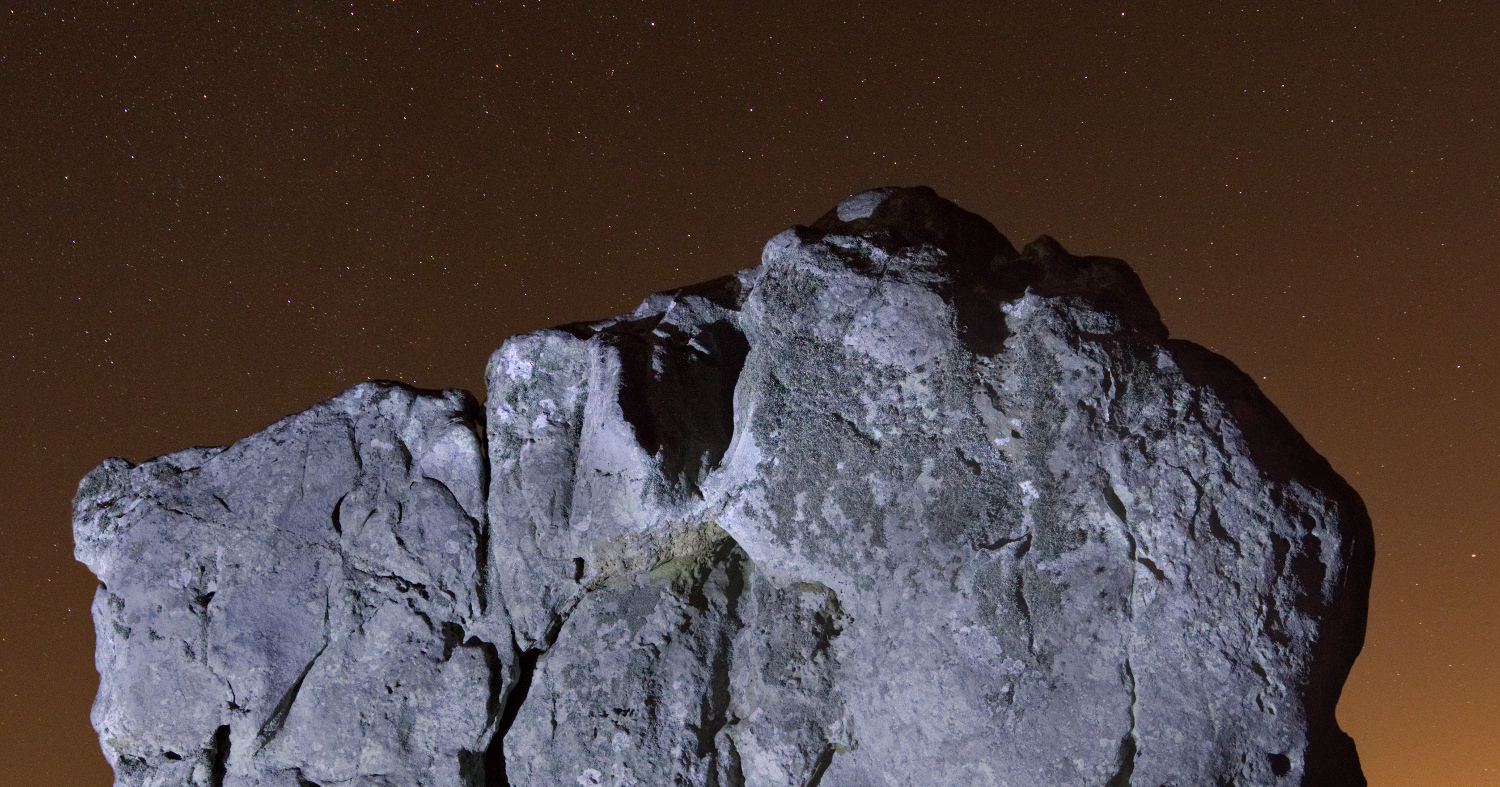
![]()
|
|
Avebury stones often manage to incorporate many different images at the same time, and yet conspire to hide them in plain sight. Stone 1 here is no exception, managing to show on its south facing top edge 2 completely different zenith-gazing faces. I noticed the skull-like face (shown in the diagram to the right of this page), and my wife Karen pointed out the living face (shown here in the left hand diagram). This latter face not only appears as a living face, but may also be wearing a headress (not impossible, I believe that my photograph of Stone 36A, West Kennet Avenue may show a demon/hag wearing a domed headpiece). Stone 1s' dual concern with skulls and living faces seems to echo two special heads in the western cell of West Kennet Long Barrow (see Meaden, "The Secrets Of The Avebury Stones" p 104). I think that the Stone 1 zenith-seekers (my subdivision of the broader term "star-gazer" coined by others) may be referring quite explicitly to these distinctive Barrow sculptures, and thereby the neolithic life/death cycle they represent - a mystical cycle by which the Great Goddess maintained the world. It is interesting to compare the skull image on the right here with my photograph of the zenith-gazer on Stone 33b, West Kennet Avenue. The style of the heads are very similar, even down to the suggestion of the temporal bone! I have now photographed several clear zenith-gazing faces at Avebury (click here for details), enough to convince me that as well as venerating the Goddess and her creative relationship with the rising sun, the cycles of the moon, and the male/female duality, that Avebury was also concerned with the stars at the zenith. I am guessing here, but my own naked eye astronomy experience suggests that they might have been venerating the summer Milky Way, including what we today call Cygnus and Lyra. Other star-gazers looked slightly downwards, roughly towards the south (I call these "equator-seekers" because they appear to look at the zone where the meridian crosses the celestrial equator), which might indicate Orion/Taurus worship? Orion may have been seen as the Sky God who mates with the Goddess, and Taurus the Bull may have been seen as a symbol of the Goddess herself (cf Gimbutas, "Language Of The Goddess" fig 411 p265). Finally, I cannot resist suggesting that the Avebury zenith-seekers might have ushered in an obsession for creating monuments that point straight up to heaven for religious purposes, an obsession that may over centuries have evolved into the churches' penchant for building spires that point upwards.
|
|
Image copyright David Baldwin Night Photography